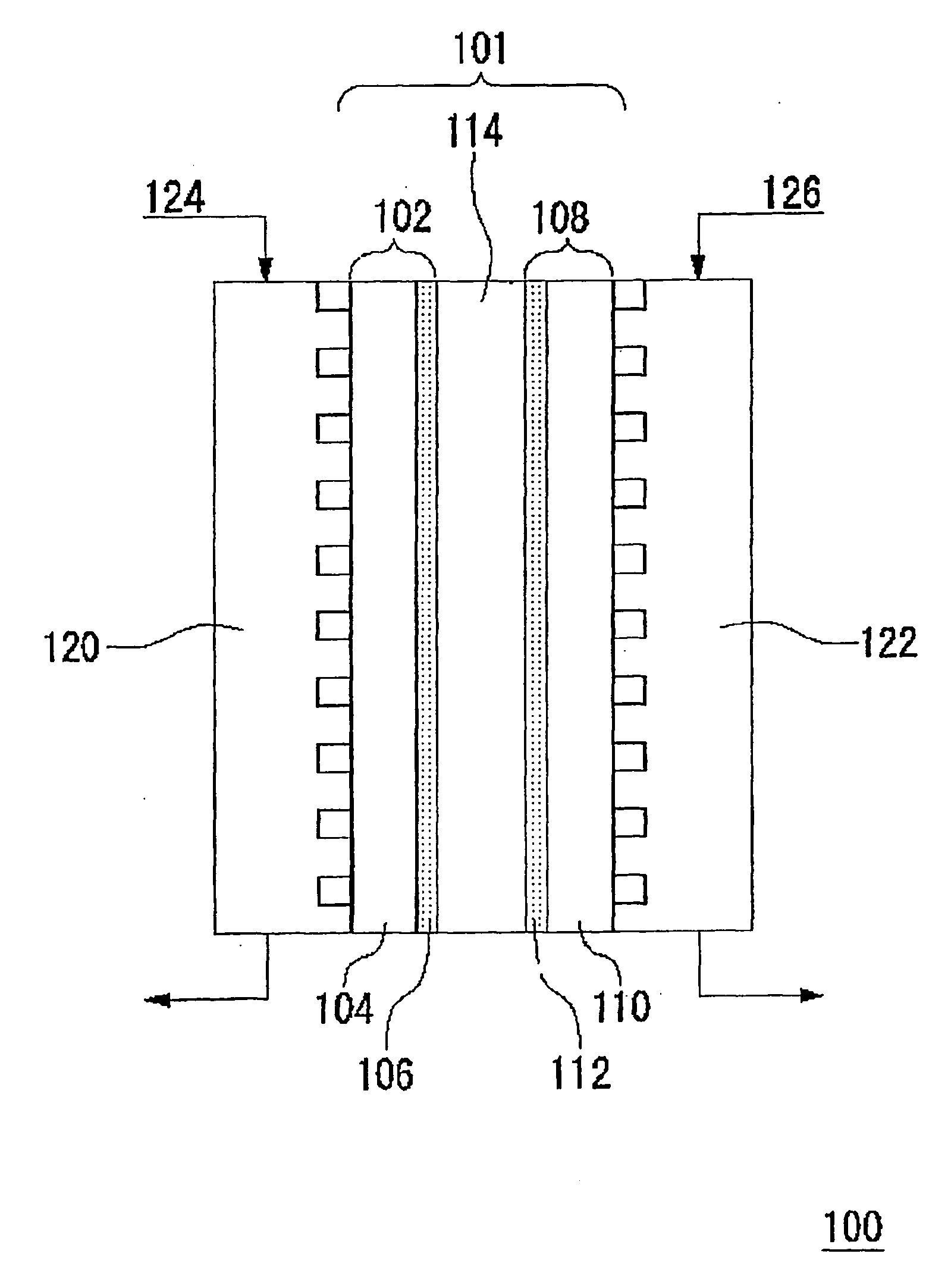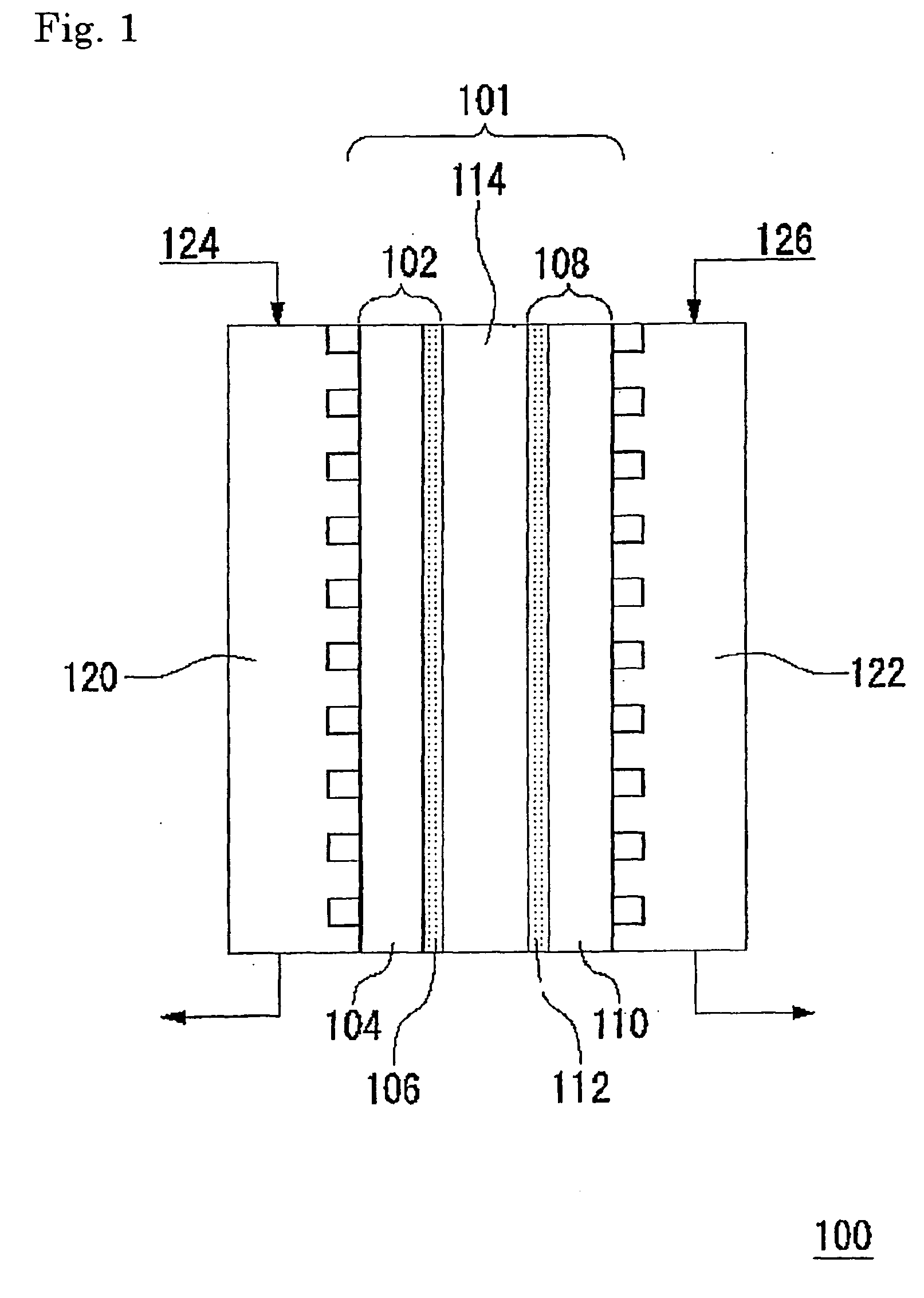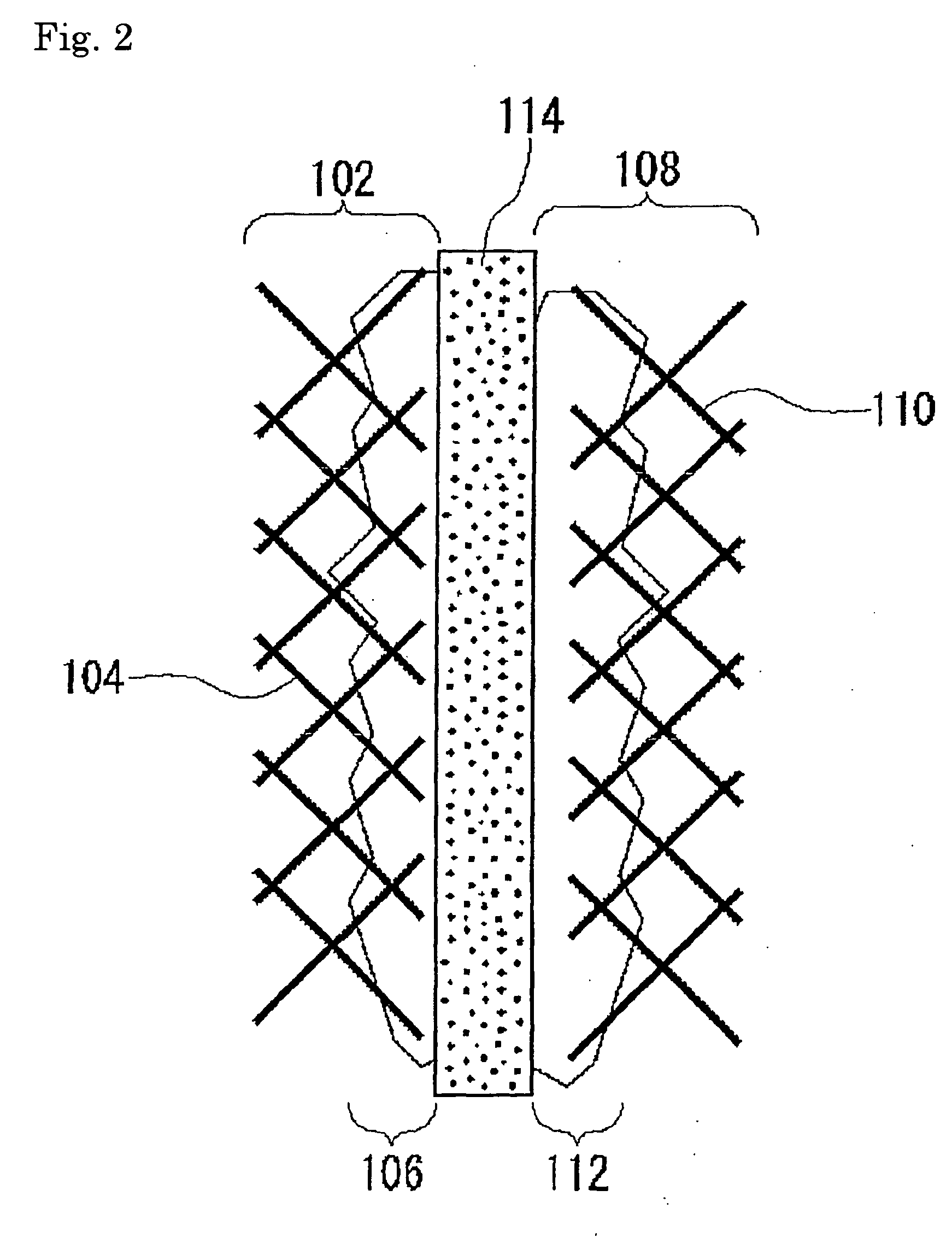Fuel cell-use catalyst electrode and fuel cell having this catalyst electrode, and production methods therefor
a technology of catalyst electrode and fuel cell, which is applied in the direction of cell components, final product manufacturing, sustainable manufacturing/processing, etc., can solve the problems of reducing output power, affecting the supply of fuel, and reducing power generation efficiency and catalyst effective surface area, so as to prevent the decrease of fuel electrode output power, reduce the effect of fuel electrode effective surface area and avoiding the effect of foaming air
- Summary
- Abstract
- Description
- Claims
- Application Information
AI Technical Summary
Benefits of technology
Problems solved by technology
Method used
Image
Examples
example 1
From Example 1 and Comparative Example 1, it was confirmed that the catalyst electrode according to this example has an effect of preventing adsorption of air bubbles on the surface thereof and of quickly removing them.
example 2
[0098] A fuel cell was prepared using the catalyst electrode in Example 1 as a fuel electrode, and the catalyst electrode in Comparative Example 1 as an oxidant electrode. Specifically, the fuel electrode and the oxidant electrode were pressure-bonded on respective sides of Nafion 117 Membrane (manufactured by DuPont: registered trademark) at 120° C., and the obtained catalyst electrode-solid electrolyte membrane assembly was used as a cell for the fuel cell.
[0099] 30 v / v % methanol solution and oxygen were respectively supplied to the fuel electrode and the oxidant electrode of the obtained cell of the fuel cell at a cell temperature of 60° C. The flow rates of the 30 v / v % methanol solution and the oxygen were 100 ml / min and 100 ml / min, respectively. The voltage-current characteristic when each fuel was supplied was evaluated using a cell performance evaluation apparatus.
The result as shown in Table 2 was obtained on the fuel cells of which the fuel electrodes contain individua...
example 3
[0102] A catalyst electrode was prepared by further adding polyethylene glycol diester laurate as a mixing accelerator and stabilizer of the anti-foaming agent, when the catalyst paste in Example 1 was prepared and when pretreatment was provided on the carbon paper. The surface of the catalyst electrode was observed using a scanning electron microscope and EMMA.
[0103] As a result, it was confirmed that particles of the anti-foaming agent were dispersed more finely on the electrode catalyst prepared in this example compared to the electrode catalyst prepared in Example 1. Using the thus obtained catalyst electrode as a fuel electrode, the voltage-current characteristic was evaluated as in the same manner as Example 2.
The result as shown in Table 3 was obtained on the fuel cells of which the fuel electrodes contain individual anti-foaming agents.
[0104] Table 3 showed that the output power of the fuel cell was further increased by using a catalyst electrode to which polyethylene gl...
PUM
| Property | Measurement | Unit |
|---|---|---|
| particle diameter | aaaaa | aaaaa |
| particle diameter | aaaaa | aaaaa |
| particle diameter | aaaaa | aaaaa |
Abstract
Description
Claims
Application Information
 Login to View More
Login to View More - R&D
- Intellectual Property
- Life Sciences
- Materials
- Tech Scout
- Unparalleled Data Quality
- Higher Quality Content
- 60% Fewer Hallucinations
Browse by: Latest US Patents, China's latest patents, Technical Efficacy Thesaurus, Application Domain, Technology Topic, Popular Technical Reports.
© 2025 PatSnap. All rights reserved.Legal|Privacy policy|Modern Slavery Act Transparency Statement|Sitemap|About US| Contact US: help@patsnap.com



